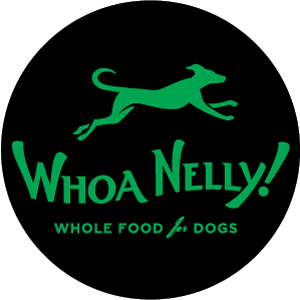Is Raw Dog Food Healthier Than Kibble?
“The gap between what dogs have evolved to eat and what we typically feed them represents one of the greatest disconnects in modern pet care”
In This Article
For more than 99% of canine evolutionary history, dogs and their ancestors have consumed a diet of mostly raw meat. While most dogs today eat a commercial diet of dry processed food, there is a viable natural alternative - raw dog food.
Biologically Appropriate Raw Food (BARF for short, but most people just call it “raw”) is a diet that mimics what dogs would eat in their natural environment. It typically consists of mostly raw meat, with a smaller amount of organs, bones and fruit & veg. The best raw meals are made with human grade organic ingredients and meet nutrient standards without synthetic vitamins or minerals.
While many pet owners are drawn to raw feeding's natural approach, most veterinary associations still recommend processed dry food. This creates a challenging question for dog owners: is raw food superior to kibble?
How dog food is made
Kibble: Dry food is the most popular form of dog food, and the overwhelming majority of dogs are fed this type of diet.
The production of kibble typically begins with rendering, where various animal by-products are cooked at high temperatures. This is mixed with grains and starches before being subjected to extrusion - a high pressure and high temperature process that creates kibble pellets.
During these manufacturing stages nutrients are degraded or destroyed. Synthetic vitamins and minerals are therefore added so that kibble meets basic nutritional requirements. Dogs generally don’t want to eat the resulting pellet, so a “palatability enhancer” is sprayed on before it’s sealed in the bag.
BARF: Raw food has a much simpler process. Fresh meat, organ, bone and fruit & veg are minced, then mixed together and frozen into portions. It’s so simple you can do it at home!
Keep in mind nutrients in raw food actually come from the ingredients in the food, rather than a synthetic supplement that is difficult for the body to digest and use.
Carbohydrates
In addition to processing, there is a significant difference in the macro nutrition of raw food versus kibble. Dry food contains between 40%-60% carbohydrates. Yes, even in grain free and premium brands. Kibble requires a very high carbohydrate level to made the pellet stick together.
The thing is that carbohydrates are not nutritionally essential for dogs.
Dogs literally require 0% carbs in their diet.
A quality raw food will contain less than 5% carbohydrates. Versus kibble which is over half carbs.
Why is this an issue? Dogs lack salivary α-amylase for starch digestion and produce limited amounts in the pancreas. Their digestive systems struggle with high starch loads, triggering chronic inflammation that can lead to disease.
Despite this, most dogs can tolerate a small amount in their diet. But there is a giant difference with a small amount of carbs from fruits and veg (raw food) and the majority of calories coming from carbs (kibble).
The pet food industry leverages dogs' ability to tolerate some carbohydrates to justify making them the primary ingredient in commercial diets. Not because it's nutritionally optimal, but because it maximises profits through cheaper production costs.
Digestion and Bioavailability
Raw diets preserve essential nutrients that are degraded during processing. Unlike kibble which undergoes extreme heat treatment, raw food retains it’s natural enzymes, vitamins, and minerals. This massively improves bioavailability - the degree to which nutrients are absorbed and utilised by your dog's body.
Research shows that raw meat diets have significantly higher digestibility than extruded kibble. Studies demonstrate both higher protein digestibility and improved fecal quality in raw-fed dogs. Raw food diets also promote greater microbial diversity in the gut microbiome than in kibble fed dogs.
The enhanced digestibility of raw food reduces strain on the digestive system and minimises waste production. Which means smaller, healthy poos.
Raw feeding also prioritises natural nutrient sources over synthetic alternatives. Kibble primarily relies on synthetic vitamins & minerals to meet nutritional standards, which are not as easily absorbed.
Raw diets provide nutrients in their natural state, complete with cofactors and micronutrients that support proper absorption. A whole food diet delivers nutrition as nature intended, with compounds working synergistically rather than in isolation.
You can’t thrive on big macs and vitamin supplements, and neither can your dog 🤮
Dental health
The mechanical action of chewing raw meaty bones and tough tissues provides dogs with a natural way to clean their teeth. Vigorous chewing helps to scrape away plaque before it turns into tartar.
Unlike kibble that often sticks to teeth and can promote plaque build up, raw meaty bones provide natural abrasion that improves oral hygiene.
A 2016 clinical study demonstrated that dogs eating a raw diet exhibited significantly reduced dental calculus and improved overall oral health when compared with dogs fed kibble diets.
Skin and coat
Well formulated raw diets contain balanced fats that improve canine skin and coat health. Dogs on raw food typically develop shinier coats and healthier skin due to consuming fats in their natural state, with an optimal omega-3 to omega-6 ratio that reduces inflammation.
A rarely discussed issue with kibble is fat oxidation after opening the packet. The fats in kibble become rancid within 2-3 weeks of opening the packaging. It doesn’t matter how big the bag is or how expensive the brand is. Once exposed to air the fats in kibble begin oxidising rapidly, a process that continues even when stored in sealed containers.
Rancid fats release harmful free radicals that damage cells and DNA. Consumption leads to inflammation, accelerated aging and increased risk of cancers and cardiovascular problems.
Oxidative damage remains a concern with raw food diets. However, since the ingredients retain their integrity, a properly formulated raw diet with appropriate vitamin E levels will preserve freshness and nutritional integrity substantially longer than ultra processed kibble.
As with any food, fresh is always best.
Allergy prevention and treatment
Raw food diets can help to prevent allergies and manage symptoms in dogs. In my experience, food sensitivities and intolerances most commonly arise due to the denatured proteins found in kibble.
Denatured proteins are proteins that have been altered by the high temperatures used in processing kibble. The extrusion process modifies the chemical shape of the protein, which can cause your dogs body to be unable to identify it as food. It then mounts an immune response - known as a food sensitivity. Any time your dog eats this protein now it will cause the inflammation that we see as red ear and paws, as well as an itch that doesn’t go away.
Feeding a raw diet means feeding a diet that is minimally processed. No cooking means the proteins remain in their natural state, significantly reducing the likelihood of triggering an adverse immune response in susceptible dogs.
Research indicates that raw food diets may play a role in reducing chronic inflammation, a condition linked to various health issues in dogs - including allergies. One study found that dogs fed raw food diets had significantly lower levels of inflammatory markers in their blood. This reduction in inflammation could help alleviate the symptoms associated with allergies.
In addition to these findings, other research observed improvements in the symptoms of atopic dermatitis when they were transitioned to raw diets. This suggests that a raw food diet can help manage and prevent allergies and food sensitivities.
What about food safety?
Despite the common sense health benefits of feeding a biologically appropriate diet, many mainstream vets cite significant risks associated with raw food. Particularly the potential for bacterial contamination that could harm both pets and their owners.
However, raw food is generally considered safer than kibble for dogs. The human food chain is tightly regulated in Australia, which significantly reduces risk of pathogens. Dogs are scavenging carnivores that are significantly less susceptible to meat pathogens like Salmonella and E.coli.
The reality is that with good safe food handling practices the risk is the same as having raw chicken or beef in your fridge. Always store meat at the bottom of your fridge and wash your hands thoroughly after handling.
Healthy dogs eat real food!
I strongly believe the benefits of feeding your dog a raw, biologically appropriate diet are enormous. This perspective is also reflected in the studies which have looked at raw food versus kibble.
Anecdotally, I’m yet to speak to someone who has transitioned to a high quality raw food like Whoa Nelly that hasn’t experienced an improvement in coat, energy, stool quality and overall vitality. When you look at the ingredients of kibble it’s pretty obvious why.
Dogs, like humans, are significantly healthier when they eat real food.








